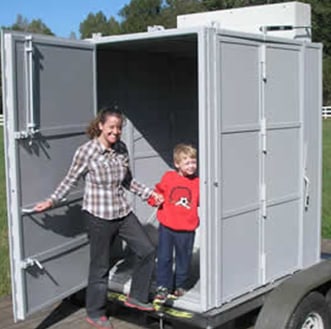BOTTOM LINE UP FRONT: Imagine if within 90 seconds all students, teachers and staff become safe from bullets during a school active shooter event? Ballistic protection is both possible and available.
During the development of an Active Shooter Response Plan for either schools or businesses, the first assumption is the time frame that one can expect for law enforcement and other first response teams to arrive on scene to address the situation. Response times have many variables from traffic and weather, to location of the responding officers, when they get the first call, and no amount of training and drills can change those variables. Once on scene, the training and team skills will come into play. For example, a fire truck may arrive on the scene but takes 3 minutes to pull out the hoses, stretch them toward the fire while someone else is connecting a hose from the fire hydrant to the fire truck; then they are ready to fight the fire. Same type of requirement for entry or assault teams into an active shooter situation. Below is a sample from large cities with more resources and their average times for response:
| https://www.safesmartliving.com/average-police-response-time/ | ||
| City | Response Time | Year Reported |
| Nashville, TN | 5.4 minutes | 2019 |
| Boston, MA | 6.1 minutes | 2019 |
| Las Vegas, NV | 6.8 minutes | 2019 |
| Washington, D.C. | 6.9 minutes | 2018 |
| Seattle, WA | 7.0 minutes* | 2016 |
| New York City, NY | 7.7 minutes | 2021 |
| Dallas, TX | 8.0 minutes | 2017 |
| Miami, FL | 8.0 minutes | 2015 |
| Philadelphia, PA | 9.0 minutes | 2018 |
| Houston, TX | 10.0 minutes | 2018 |
| Atlanta, GA | 10.0 – 13.5 minutes | 2019 |
| Denver, CO | 11.6 minutes | 2019 |
| Detroit, MI | 14.5 minutes | 2018 |
| Los Angeles, CA | 20 minutes | 2021 |
| Chicago, IL | N/A ** | 2021 |
| * According to the Seattle Times, they are missing that mark when responding to certain areas and certain report types, including domestic violence. | ||
| **Chicago has a reputation for being a high crime city, and their police response times for priority 1 calls have been reported to be as quick as 3.46 minutes. Unfortunately, we were unable to find any recent statistics, nor an average response time across all 911 calls. And a report by ACLU Illinois indicates that there is significant disparity in priority response times across neighborhoods. In summary, given the outdated nature of the report, and lack of statistical data, we have not published a time for Chicago. |
Now a look at recent school shooting events including the time from first alert of an active shooter event until law enforcement arrival on the scene and time before direct action was initiated to stop the active shooter:
| Event | # of Victims | Total time of event | Initial contact | Police arrival | Police contact/ entered | End of event |
| Columbine * | 13 | 13 min | 11:19 am | 2 mins | 12:08 pm | |
| Sandy Hook* | 26 | 9:35 am | 20 min | 6 mins | ||
| Marjory Stoneman Douglas (Parkland) * | 17 | 2:21 pm | 2:32 pm | 2:38 pm | 1 hr later | |
| Uvalde ** | 21 | 11:30 am | 11:35 am | 1:06 pm | ||
| * https://www.newsweek.com/how-police-response-times-compare-school-shootings-since-columbine-1711038 | ||||||
| ** https://www.cnn.com/2022/05/27/us/uvalde-shooting-police-response-timeline/index.html |
The VAST6 provides maximum security after everyone in the room enters the shelter and the door is secured, probably in 90 seconds or less. In every active shooter event, especially in schools, how many lives would be saved if this capability was embraced? The VAST6 takes this metric of time where every second counts and, after 90 seconds, greatly reduces the critical dilemma of action time, non-action time or timely tactical response. If the first responders arrive on scene after the first 90 seconds, a critical capability could already be in place and doing its job of protection of human life.
Why not investigate how FEMA grant funding can provide this type and level of protection?




